Magic System
"The Story of the Weave..."
Magic, as in many fantasy systems, comes in two broad categories: divine and arcane. Divine being that which is gifted from the gods, in this case The Gods of Gothenya. Arcane being sourced from the study and practice of wizardry and the various aspects of "The Art," both light and dark. On the surface, these seem like rather broad distinctions, however, in actuality they're closer in origin than one might initially presume.
All magic, both divine and otherwise, utilizes the atmospheric "element" or "energy" known as Eret Si'Nu. This substance (see Eret Si'Nu, Vapor form) is widely believed to have emanated from Mount Celene upon her landing on our world. Stories or legends of magic predating her arrival are just that, stories. Unless...
Perhaps, it is possible that the long forgotten "Elder Spirits," which humans once worshipped in the pagan youth of their species, might have suffused the air with some sort of magical element of their own. But, of course, this is simply conjecture and an attempt to add veracity to some of the ancient stories we've all heard.
Ultimately, whether sourced from celestial beings or from book study, magic all draws from the same pool. It's only that one process requires a "middle man" of sorts, while the other does not. I'm of course referring to the "minor" form of divine intervention employed when a priest of some god or another invokes their magical "talents" through prayer. In such cases, the very gods themselves act as a sort of intermediary, shaping the Eret Si'Nu and releasing it in the manner desired by the mortal worshipper. This system is relatively simple and understandable, and while the many gods run the gamut of ideologies, the manner in which they grant magical boons to their followers is remarkably similar all around.
Where things begin to get complicated is when you dig into the arcane side of spell casting. Arcane casters come in several varieties, the most common being the wizard (or mage). Wizards aren't necessarily born, rather they can be made from extensive study and practice, typically at one of the various arcane universities of Varuum or Progress & the Colleges of Wick. Of course, there always has to be some innate talent and aptitude towards the Art. A sensitivity of sorts for the Eret Si'Nu that suffuses the very air we breath. To most, this mana-like substance is completely undetectable. But to those with "the gift," it's as if the air itself takes on a somewhat shimmering property. Even at a young age, future casters are often aware of the presence of something supernatural all around them.
Though there are hedge mages who are either self-taught or perhaps mentored as an apprentice by a trained master, most mages need attend a proper school in order to unlock any of the various "doors" of magical perception. Master wizards claim there are 13 doors of Arcanum, with only the first several simple enough to open by those without proper training. In fact, in game terms, no self-taught wizard can access spells above 2nd Level.
The 13 doors do not directly correspond to the 9 levels of spells accessible by PCs (obviously), but they breakdown as follows...
Doors 1-2 = 1st level, Doors 3-4 = 2nd level, Doors 5-6 = 3rd level, Door 7 = 4th level, Door 8 = 5th level, Door 9 = 6th level, Door 10 = 7th level, Door 11 = 8th level, Door 12 = 9th level, Door 13 = something unknown, beyond...
Beyond wizards, there are two other forms arcane casters may take... Sorcerers are those with such a degree of innate magical talent, beings who can act as a direct font or conduit for the processing of Eret Si'Nu, that they essentially bypass traditional study and rely solely on practice. They are separate from hedge mages in that it requires a very special and rare gift that cannot be learned. The sorcerer simply has to be born with it. Finally, warlocks are those who do not perhaps claim innate magical talents, but rather have made some sort of supernatural "pact" with a powerful entity with access to some of the greater doors of perception. Regardless of origin, each caster pays a physical and/or psychological tax for utilizing the Eret Si'Nu, shaping it into a usable form. How this is expressed in game terms will follow in a section below.
As you can see, there is a blood cost for attempting to push oneself to greater feats of arcane strength. Even when a spell is a success, damage is typically incurred. In lieu of straight "magic damage" inflicted by spell casting, the DM may elect to invoke a more appropriate detriment based upon the school of magic involved (see above). Currently, this must be done on a case by case basis. Eventually, I may come up with appropriate charts. Further, those with access to the Dungeon Crawl Classics rule book may wish to invoke the specific spell effects, tailored to each spell individually. I may attempt that myself. Now for the Corruption and Misfire tables... The simplest way to deal with any corruption caused to the caster from a failed spell would be to pull from the suggested effects per school of magic. Here the DM would just make a reasonable call. But if that feels too arbitrary, here's a crack at a table...
Note that I only pulled from the DCC Minor Corruption Table. You may incorporate Major and Greater Corruptions if you feel like it. I felt it best not to overwhelm the PCs with potential negative effects (yet). Further, any of these effects can be replaced by one more thematically appropriate by the DM after any roll. Now for the MISFIRE TABLE!
An alternate chart of potential spell crits or mishaps might look something like this...
TO BE CONTINUED SHORTLY...
...And that's it for now. I'll update again (if necessary) after a few more sessions of testing. Let's just see how this whole thing goes, shall we?
Doors 1-2 = 1st level, Doors 3-4 = 2nd level, Doors 5-6 = 3rd level, Door 7 = 4th level, Door 8 = 5th level, Door 9 = 6th level, Door 10 = 7th level, Door 11 = 8th level, Door 12 = 9th level, Door 13 = something unknown, beyond...
Beyond wizards, there are two other forms arcane casters may take... Sorcerers are those with such a degree of innate magical talent, beings who can act as a direct font or conduit for the processing of Eret Si'Nu, that they essentially bypass traditional study and rely solely on practice. They are separate from hedge mages in that it requires a very special and rare gift that cannot be learned. The sorcerer simply has to be born with it. Finally, warlocks are those who do not perhaps claim innate magical talents, but rather have made some sort of supernatural "pact" with a powerful entity with access to some of the greater doors of perception. Regardless of origin, each caster pays a physical and/or psychological tax for utilizing the Eret Si'Nu, shaping it into a usable form. How this is expressed in game terms will follow in a section below.
How to Harness the Eret Si'Nu...
The easiest way to think of the magical energy that permeates the totality of the air that we breathe is as a series of (billions of) microscopic computers. Something akin to a "fantasy version" of nanotechnology. The Eret Si'Nu is a powerful set of billions upon billions of tiny intelligent (or at least semi-sentient) particles that will reshape themselves and answer to commands given by mortals, provided that the commands are given in the proper code (think programming language). The language of magic consists of the verbal, material and somatic components utilized by one versed in its grammar. The simplest way to express it is that the Eret Si'Nu will reshape itself, en masse, to fulfill an arcane command, as long as it knows what the caster seeks to accomplish. Therefore, the caster must provide a representative example on a different (smaller) scale of the desired effect. This is why many flame-based spells require something like a lit match or candle, which represents flame on a smaller scale. The arcane instructions of the verbal component, along with the directional instructions associated with the somatic component (the targeting, so to speak), is coupled with the material representation or "stand in" for the desired effect. The proper combination of some or all of these components allows the living mana of the Eret Si'Nu to interpret any command. But why is it so taxing on the caster? The Eret Si'Nu is the animated "will" of the magic continuum. It, in itself, is not a fuel source (though it's often mistaken for such). In fact, the fuel that triggers any spell is sourced directly from the caster's (or something living, and in proximity) life-force. The casting of even the simplest of spells weakens the caster (or the chosen, living "stand in" for the caster), and some spells are incredibly taxing on their health (both mental and physical). Casters of a certain moral fiber may learn to source the life-force energy not from themselves, but rather from an outside living entity. This is a dangerous and hurtful form of defiling magic, especially as the chosen receptacle or victim of the necessary life-drain may be completely unaware or unwilling. Mages who practice this sort of casting, which invokes Blood Magic, fall under a category/grouping called "The Takers," whereas mages who only source from within themselves (avoiding harm to others or the environment) are called "The Benevolence." The most famous example of "Takers" would likely have to be The Sanguine Order, or possibly the The Lentokki God Kings who originated from their ranks. Ultimately, those who take personal responsibility for their Art only draw power from within, whereas those without a personal code or conscience may pull energy from the very world around them, be it nature (the grass, tress and assorted flora in close proximity to the caster) or even adjacent sentient life. The defiling blood magic (all magic that pulls from outside the caster's body is considered blood magic, though that drawn from a sentient being is the most powerful) is responsible for many atrocities around the world, the most well-known being the scouring of an enormous section of western Golthien, where the Lentokki God King's magic has stripped the land of its natural, living resources. All that now remains in much of the west of Golthien is completely devoid of flora and the fauna that fed from it. It is important to remember that since the Eret Si'Nu is alive and has a will, spells are alive and they have powerful wills. Controlling these elements, bending them to ones will, requires extreme devotion and force of personality. It's why simply everyone cannot wield magic as a common tool.IN GAME TERMS...
I'm currently experimenting with several different ways of tackling this in my own campaign. One version has all demi-humans, especially those who originated from Mount Celene (such as elves, dwarves, gnomes, goblinoids and to some extent halflings), cast spells normally. They play the game with the original "vanilla" rules. However, with humans is where it gets interesting... Humans either cast inferior or superior versions of their spells, based upon how much physical/mental tax they're willing to pay. The more the blood price is paid, the more potent the spell effect. In line with that, perhaps each (spell) level features an increasing cost in blood or sanity. The coolest thing, I think, would have that each of the 8 schools of magic (as in 5e) had different types of physical and mental costs. For example, with Conjuration, maybe a person or item of equal mass must be transposed to the dimension or realm from whence the summoned creature originated. With Divination, the effect could be mental. Maybe the caster (randomly) forgets something that could either be trivial or very crucial (a roll table would be required to determine the outcome). Abjuration seems like a good candidate for straight damage to either the caster or some nearby life-form (if the caster is decidedly a "Taker"). Necromancy would deal the most life-draining damage to the caster or ecosystem (sort of how it works in AD&D's Dark Sun setting with their defilers). Enchanment could steal magic energy from one source and transfer it to another (basically robbing Peter to pay Paul). Illusion could create a cognitive dissonance or disassociation within the caster (or others), where they lose their sense of self or identity. Or perhaps they actually believe they are something they in fact are not. Transmutation could mutate the caster (or others) on a genetic level, possibly creating aberrations (both beneficial and otherwise) such as scaly skin, clawed hands, shrunken heads, stuff like that. Or it could straight up give you cancer. Last but not least, with Evocation, it sounds like we're back to straight damage to self or others. I think it really help emersion to give each school of magic further distinctions and benefits/consequences beyond those which are given by the "rules as written." NEXT... I will attempt to conjure up a chart delineating damage (both physical and psychological) per spell level for each school of magic. Taking a cue from Dungeons Crawl Classics, which features an amazing system for random (weakened or enhanced) spell effects, tailored to each individual spell. I think I'll limit mine to the school of magic, so we only have to have 8 charts of possible drains and side-effects.WIZARDS...
Let's begin with some "minor" modifications to the manner in which wizards cast spells, regardless of school emphasis... In my desire to make wizards stand out amongst other arcane spell casters once again, I've decided to begin my magic-altering experiment with them. The following is a combination of boons and risks associated with those who dare meddle with "the Art." 1. Wizards now have access to all spells in their spell book at all times, to the limit of their spell slots. No more # of spells memorized vs # of spells in your book. This arguably small boon is enacted to offset some of the more dangerous additions to the wizard class. 2. Wizards still begin with six spells in their spell books, and gain two new spells for their spell books each level, and all other spells must be copied into their books at the wizard's own cost. Just reiterating this preexisting rule. 3. Wizards may cast any of their spells in the old fashioned, "vanilla" manner, with spell slots expended in exchange for a set spell effect (with few permutations). But this is somewhat boring, and you didn't become a wizard to be boring, now did you? 4. Wizards must learn all spells over 3rd level from an arcane academy or a master graduate of such an academy. No hedge wizards have spells over 3rd level. More on this later, as colleges of magic are more fleshed out... 5. Each time a wizard expends a spell slot to cast a spell, they may choose to take a risk to expand the power of the spell in question. This attempt will now require an arcane skill roll (d20 + spell skill bonus - spell level). There is no DC, rather a set of possible effects based upon the rolled result. This cribs heavily from the Dungeon Crawl Classics spell casting method. This is meant to simulate harnessing the Eret Si'Nu and pushing it beyond what is normally expected of it. This (often) effective means of improving spell potency also results (typically) in damage to the caster. The chart of effects (the very definition of a work-in-progress) should be something similar to this...- Roll: Effect: (1d20 - Spell Level, + Spell Modifier) 1 : Critical fail. Possible corruption/likely misfire. 2d10 magic damage to caster (in addition to potential misfire). Roll 1d6. (1-2 = corruption, 3-6 = misfire) 2-11 : Fail. Possible misfire/corruption. 1d10 magic damage to caster. Roll 1d6 (1 = corruption, 2-5 = misfire, 6 = no effect) 12-17 : Spell effect as written. 1d8 magic damage to caster. 18-19 : Spell amplification level 1 (double damage, double duration, possible other boon). 1d6 magic damage to caster. 20-23 : Spell amplification level 2 (spell slot retained, double damage or duration, may cast another spell in the same round). No damage to caster. 23+ : Spell amplification level 2 AND either no damage to caster OR caster can elect to take 2d6 magic damage in order to triple the spell effect (damage, duration, or otherwise).
As you can see, there is a blood cost for attempting to push oneself to greater feats of arcane strength. Even when a spell is a success, damage is typically incurred. In lieu of straight "magic damage" inflicted by spell casting, the DM may elect to invoke a more appropriate detriment based upon the school of magic involved (see above). Currently, this must be done on a case by case basis. Eventually, I may come up with appropriate charts. Further, those with access to the Dungeon Crawl Classics rule book may wish to invoke the specific spell effects, tailored to each spell individually. I may attempt that myself. Now for the Corruption and Misfire tables... The simplest way to deal with any corruption caused to the caster from a failed spell would be to pull from the suggested effects per school of magic. Here the DM would just make a reasonable call. But if that feels too arbitrary, here's a crack at a table...
- ROLL: EFFECT: (1d10 - Spell Level, + Spell Modifier) 1 : Boils, pustules or burns develop on caster's face. -1 Cha, permanent until cured by Major Restoration. 2 : Caster's skin melts into mutated form. Location (1d6): 1 - face, 2 - arms, 3 - legs, 4 - torso, 5 - hands, 6 - feet. May penalize Dex or Cha (DM's discretion). 3 : One of caster's legs grows 1d6" and affects gait. Movement speed reduced by 5'. 4 : Eyes affected. Roll 1d4: 1 - glowing eyes, unearthly color, 2 - eyes gain light sensitivity (-1 to all daylight checks), 3 - caster gains Darkvision (or gains 60' to Darkvision if already has), 4 - eyes become large and fish-like. 5 : Painful lesions develop on caster's hands and feet. -1 penalty to Dex until Greater Restoration cast upon. 6 : Ears mutate. Roll 1d6: 1 - ears now pointed (if not already), 2 - ears fall off (doesn't affect hearing), 3 - elephant ears, 4 - donkey ears, 5 - ears shrivel and fold back, 6 - hearing enhanced (+1 to Perception). 7 : Chills. Caster shakes constantly for 2d10 hours, during which they must make a Dex Save (DC 10) each time they perform any complex action with their hands. 8 : Flip a coin. Heads: Skin changes color to that most suited to spell (blue for cold based, red for fire, etc), Tails: Face shifts to match that of either another PC or NPC previously encountered, at the DM's discretion. 9 : Caster's hair suffused with dark energy. Roll 1d4: 1 - hair turns white, 2 - hair falls out completely, 3 - hair permanently sticks up all over, 4 - hair turns electric blue (caster regains spent spell slot). 10+ : Character passes out for 2d6 rounds or until awakened.
Note that I only pulled from the DCC Minor Corruption Table. You may incorporate Major and Greater Corruptions if you feel like it. I felt it best not to overwhelm the PCs with potential negative effects (yet). Further, any of these effects can be replaced by one more thematically appropriate by the DM after any roll. Now for the MISFIRE TABLE!
- ROLL: EFFECT: (1d8 - No mods! Totes random!) 1 : Nearest ally partially transformed into animal (CON Save: DC10 + Spell Level). Roll 1d6 to determine affected body part: 1 - arms, 2 - legs, 3 - skin, 4 - head, 5 - torso, 6 - full body. Roll 1d8 for animal type: 1 - chicken, 2 - gorilla, 3 - cow, 4 - lizard, 5 - snake, 6 - horse, 7 - goat, 8 - dragon. Duration of effect is 1d6 days. On a roll of 6, re-roll as 1d6 weeks. On a second 6, re-roll as 1d6 months. Ouch! 2 : Different spell effect! Randomly choose another spell of the same level. Execute normally as if cast "vanilla style." Follow the results to the best of your ability. 3 : Rain! But not water! Torrential downpour of random crap. Roll 1d6: 1 - flower petals, 2 - garden snails, 3 - cow dung, 4 - rotten veggies, 5 - iron ingots (1d4 damage unless successful DC12 Dex Save), 6 - snakes (50% chance poisonous). 4 : Explosion centered on nearest creature (friend or foe). Select target randomly if several are equidistant. 1d4 fire damage per spell level. 5 : Transformation! One randomly determined creature within 30' (if none, then caster) turned into "something else." Roll 1d6: 1 - stone, 2 - crystal, 3 - earth, 4 - iron, 5 - water, 6 - fire. CON Save DC10 + spell level to resist. Effect lasts 1d12 turns. If 12 rolled, re-roll. If 12 rolled a second time, effect is permanent. 6 : Accidental corruption. Roll 1d12+5 on (Minor) Corruption Table and apply effect to 1 randomly determined creature within the six closest to the caster. No save allowed! 7 : Fireworks! Brilliant colored lights explode all around the caster. Thunderous booms! No damage, but all concentration broken (no Save) and creatures with INT lower than 6 affected as if by Fear. 8 : Cloud of ash! Everyone within 20' is coated in fine ash. No other effect.
Spells as Rituals
Currently, spells cast as rituals are performed as in RAW, however this might be up for grabs in the near future...UPDATE 9/23/19
Thoughts on spell casting requirements... Continuing with the notion of no memorization required (giving wizards constant access to ALL spells in their spell books), I'm considering having spell checks for ALL spells cast - even those without a target. 1. All spells cast must begin with a (base DC 11) Spell Accuracy Check. If one succeeds, and the spell normally requires a "to hit" roll, this initial roll also serves that purpose (only one total roll required). 2. Similarly, if the initial Spell Accuracy roll succeeds, and the spell cast requires a target to "Save" for half-damage or whatever, the initial roll will serve as the DC for the Save. This basically replaces the "Spell Save DC" stat on your character sheet. 3. If the roll is a "nat 20," the spell not only automatically hits (or the opponent auto fails their Save), but an additional beneficial effect is incurred for the caster. Typically this would be just an increase in damage output, but could be something more creative for non-lethal spells. 4. Conversely, if a spell fails, there is an increasing chance (inversely proportional by how low the roll was) of a deleterious spell effect. A "Nat 1" guarantees a spell mishap. All others give a chance for one on a sliding scale. 5. Spell slots would remain a mechanic, and they act essentially in the RAW manner, but some effects might possibly affect whether or not a spell slot is actually spent (or how many). A "nat 20" for example might allow the caster to retain the spell slot meant to be expended (in lieu of double damage or some other effect), whereas a "nat 1" might fail and also cost "double spell slots."An alternate chart of potential spell crits or mishaps might look something like this...
- 1. Roll 1 = automatic mishap 2. Fail roll by 1 = Requires a DC12 Spell Attribute Save (your spell casting attribute) to determine if mishap occurs. 3. Fail roll by 2 = Requires DC13 Spell Save... and upward, adding # failed by to the base DC11. 4. Succeed by 5 or greater = 5% chance per point (5 or over) of Spell Crit. Example, succeed by 6 gives a 10% chance. Succeed by 5 gives 5%. 5. Succeed with "Nat 20" = auto crit.
TO BE CONTINUED SHORTLY...
PLAYTEST UPDATE 9-29-19, RULES IN USE...
What follows is the eventual hybrid that I settled on for playtesting purposes. It combines many of the previous concepts, but tones down some of the more extreme elements while maintaining the dangers and rewards of arcane spellcasting... MAGIC: WIZARDS a. First off, wizards no longer have to memorize the spells in their spell books. It is automatically assumed that whatever spell is contained within the book, the wizard has access to at any time they have the appropriate spell slots. b. At 1st level, wizards of all schools still gain a spell book containing 1d4 +3 1st level spells. At each additional class level, the wizard gains either 2 or 1d3 spells of their choice (of a level for which they have spell slots). c. There is no change to the system of spell slots per level. d. Spellcasting Ability is Intelligence, Spell Save DC = 8 + prof + Int modifiers, and your Spell Roll Modifier (both to hit and to succeed) = your prof + Int modifiers. e. ALL spells now require a d20 roll to see whether or not they succeed. Even non-attack spells. Your Spell Roll Modifier is added to this roll, and the results not only tell you whether or not you succeed, but also the degree to which you either succeed or fail (including spell cries and mishaps). f. Ritual Casting remains unchanged from the “rules as written.” They are safer, but more vanilla in effect. g. Arcane Recovery remains the same, with total slots recovered not exceeding 1/2 your wizard level (rounded up) after a Short Rest. This feature may only be used once per day. Slots must be below 6th level. h. Cantrips can be cast unlimitedly, but still require a Spell Roll to succeed. However, the maximum crit or mishap a cantrip may incur is drastically less than that of leveled spells. i. The base Spell Roll DC = 11. It is increased by +1/level of the spell attempted (so a lvl 9 spell would be DC20). j. If a spell requires a Spell Attack Roll in addition to the mandatory Spell Roll, the initial Spell Roll counts as both rolls. In other words, only one total roll is required. Further, if a spell requires a target to make a Spell Save, the (successful) Spell Roll also serves as the DC for that individual Save, and replaces the normal Spell Save DC. k. If the Spell Roll is a “Nat 20,” the spell automatically succeeds and a benefit is incurred. Conversely, if the roll is a “Nat 1,” the spell automatically fails and a mishap is incurred. l. If a spell either succeeds or fails by more than 5, the caster must make an INT Save w/DC set at 8+Spell Lvl to either gain a benefit or ignore a mishap (natural 20’s or 1’s supersede this rule).TABLES
(d6)* BENEFITS:
1. Spell slot not expended 2. Spell slot not expended 3. Spell effect/duration/AoE increased x 1.5 4. Spell effect/duration/AoE increased x 2 5. Spell effect/duration/AoE increased x 3 or additional target effected 6. Instantly cast another spell/no cost** * cantrips roll d4 on same table. ** spell must be same lvl or lower(d6)* MISHAPS:
1. 2x spell slots expended 2. 2x spell slots expended 3. Spell targets ally/enemy 4. Random spell effect 5. Explosion centered nearest ally. 5’ radius/spell lvl, 1d4 dmg/spell lvl. 6. Caster Corrupted/Transformed * cantrips roll d4 on same table.(d12) SPELL CORRUPTIONS/TRANSFORMATIONS
1. Nearest ally partially transformed: Random S/M animal. 1d12 minutes. 2. Nearest ally fully transformed: Random S/M animal. 1d12 minutes. 3. Caster partially transformed into random S/M animal. 1d12 minutes. 4. Caster fully transformed into random S/M animal. 1d12 minutes. 5. Caster gains Short Term Madness. 6. Caster gains Long Term Madness. 7. Caster gains Indefinite Madness. 8. Caster gains Lingering Injury. 9. Random target (6 nearest, including caster) gains Lingering Injury. 10. Caster loses all spell slots until Long Rest (no Arcane Recovery). 11. Caster instantly drops to 0HP & gains 1 lvl of Exhaustion. 12. Random target (6 nearest, including caster) turned to stone. 1d12 minutes.* if result = 11 or 12, roll d12 again to see how many hours instead....And that's it for now. I'll update again (if necessary) after a few more sessions of testing. Let's just see how this whole thing goes, shall we?

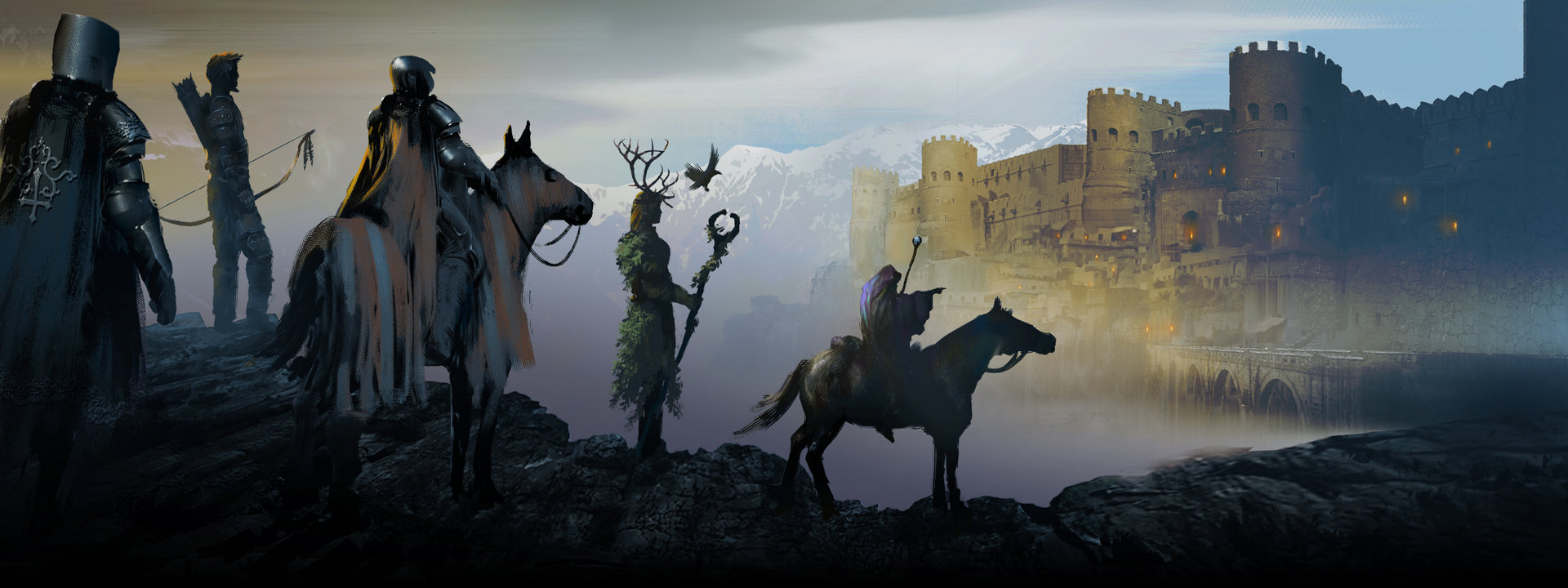
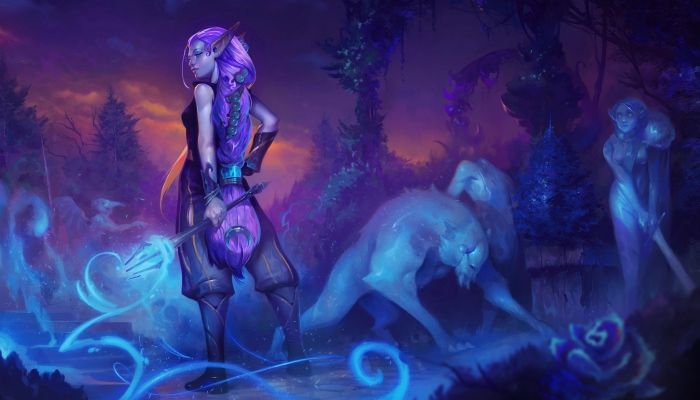
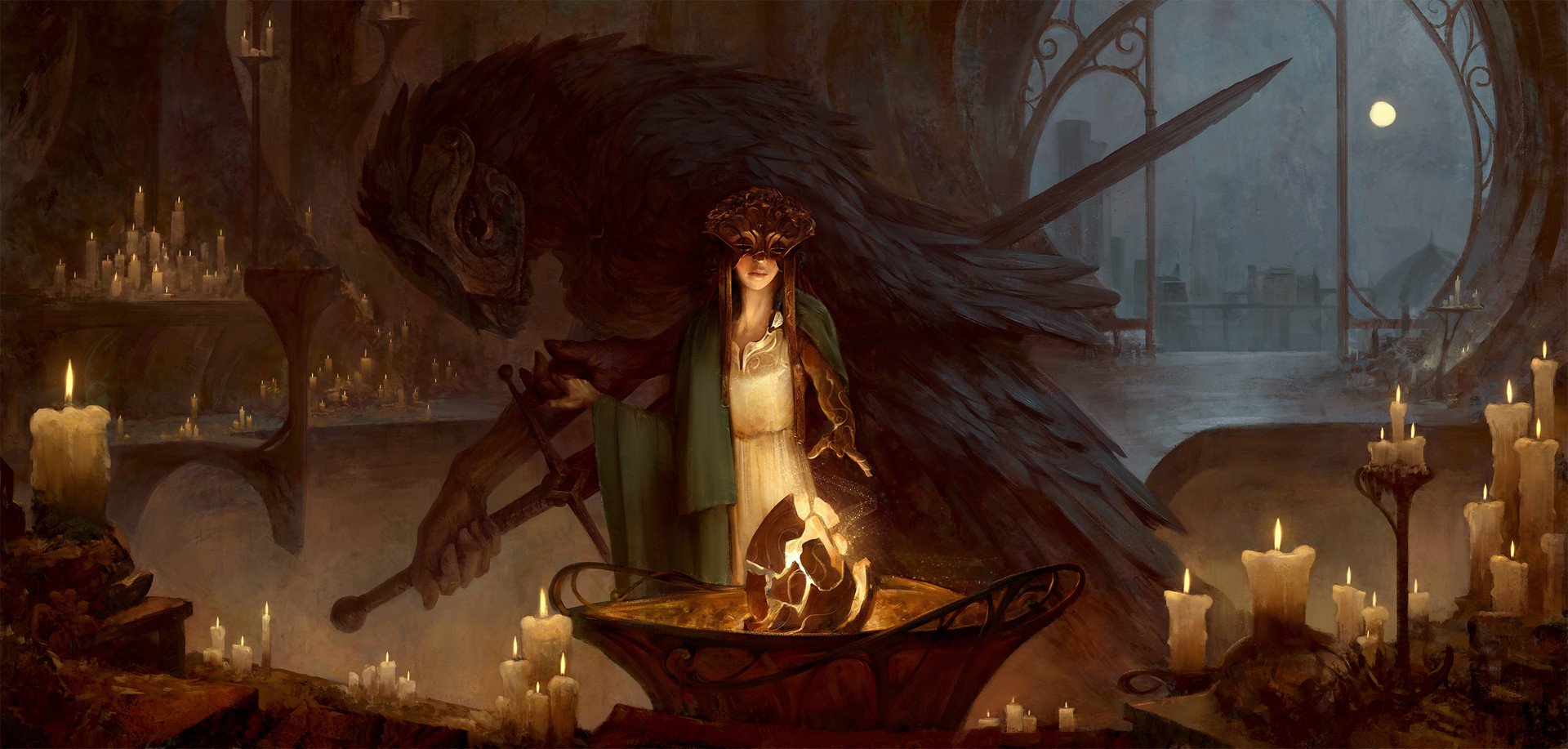
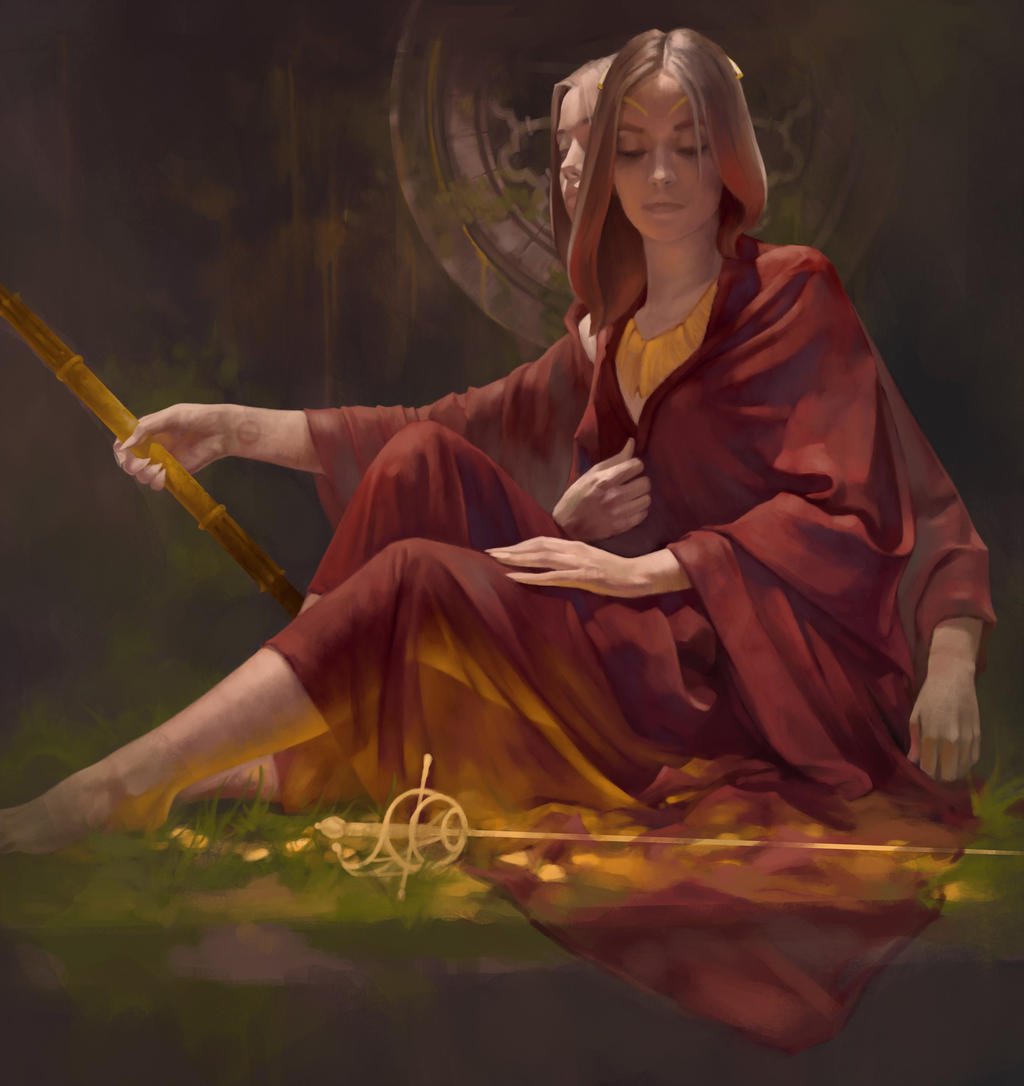

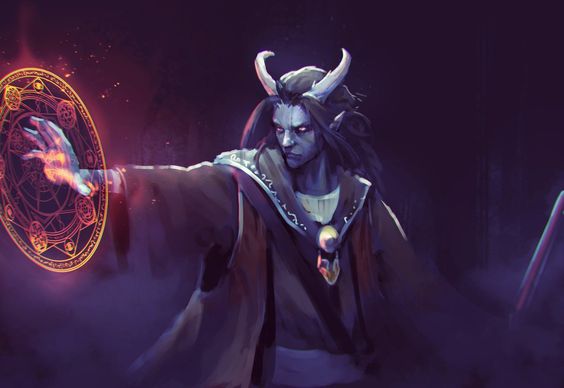




Comments